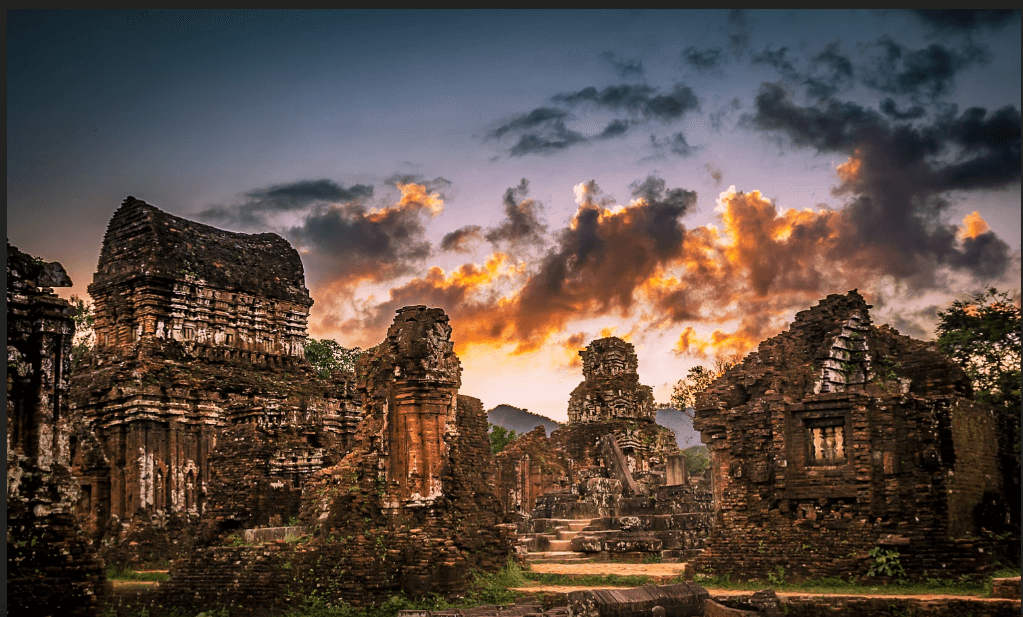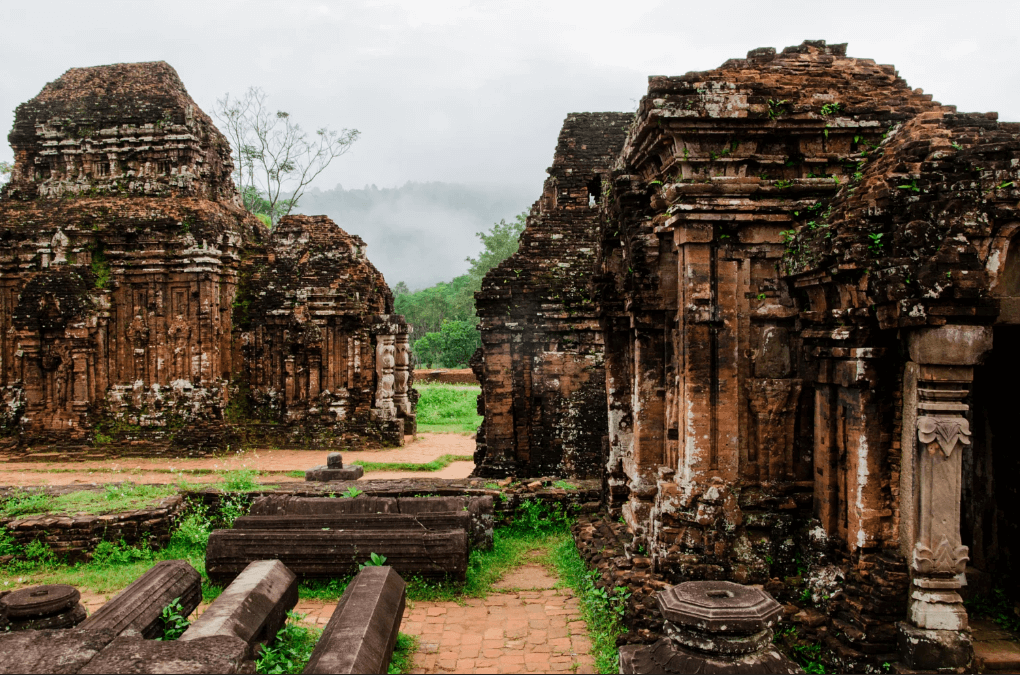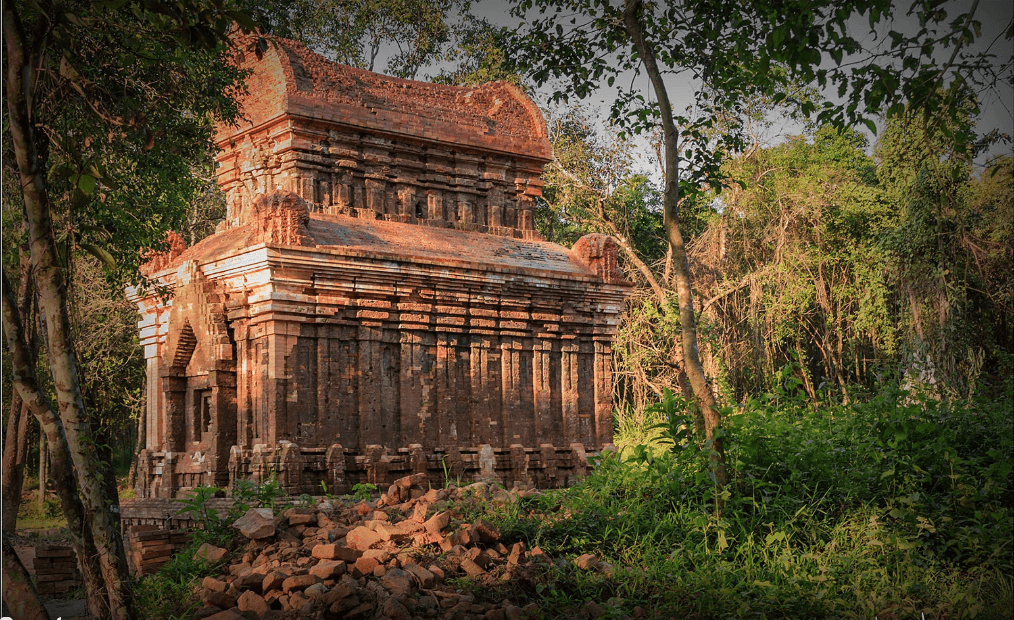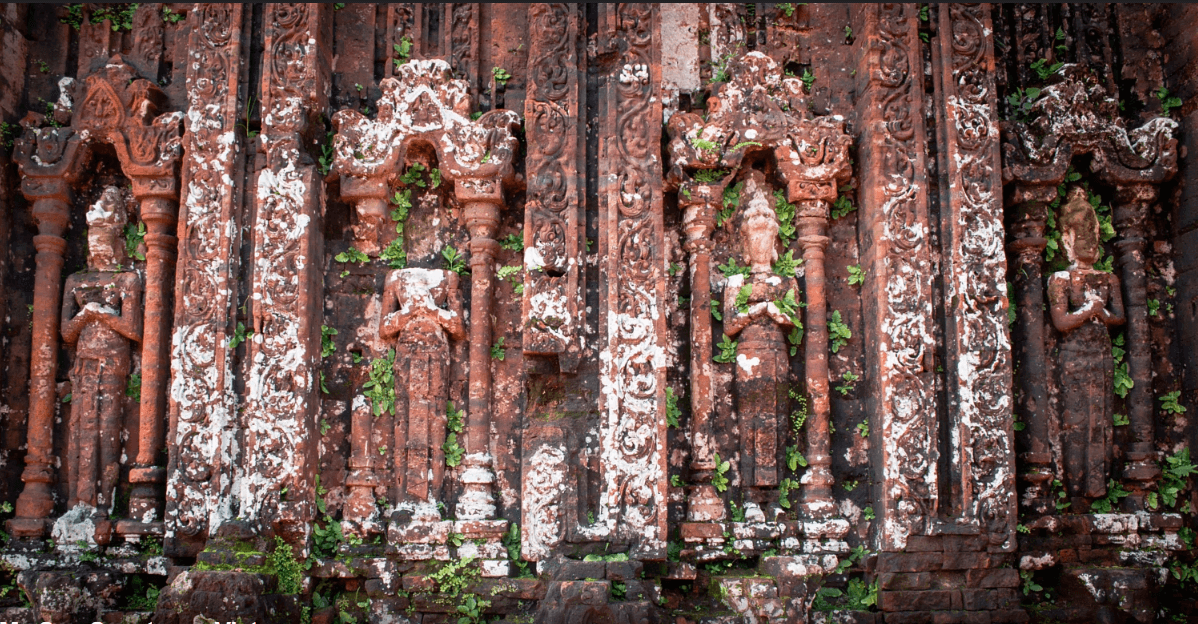MY SON SANCTUARY IN HOI AN PRIVATE TOUR

Table Of Contents [hide]
Introduce My Son Sanctuary
Between the 4th to the13th centuries, a unique culture which owed its spiritual origins to Indian Hinduism developed on the coast of contemporary Viet Nam. My Son Sanctuary is graphically illustrated by the remains of a series of fabulous tower-temples located in a beautiful valley. That was the religious and worshiping capital of the Champa Kingdom for most of its existence.

My Son Sanctuary Vietnam and the Champa Kingdom history
Long-time ago, the real Vietnam land was just in the North. Nowadays, it is from Thanh Hoa province to Ha Giang province. From the Center to the South of Vietnam was the Champa Kingdom. A totally different kingdom and they had their own cultures, language, customs and they follow Hinduism. But in 1306, the Champa King, his name Che Man, would love to get married to our princess Huyen Tran. To get married to Huyen Tran, he divided 2 provinces in central Vietnam from Quang Binh province to Hai Van pass to be a wedding gift. Our king accepted the wedding gift and gave marriage to the Champa kingdom. One year after the marriage, Champa king passed away then later we attacked them. They lost the country, so they moved to the South of Vietnam. Under the second Emperor of the Nguyen dynasty, emperor Minh Mang, we got all Vietnam’s land now.

What to see at My Son Holy Land now?
The Unesco World Heritage Site
My Son is maybe the oldest inhabited archaeological place in Indochina. But a big majority of its architecture was destroyed by the American bombing during a single week of the Vietnam War. The My Son temple complex is considered one of the foremost Hindu temple complexes in Southeast Asia. It is one of the prime heritage sites of this nature in Vietnam. It is compared with other historical temple complexes in Southeast Asia, such as Bagan of Myanmar; Borobudur of Java in Indonesia; Angkor Wat of Cambodia, and Ayutthaya of Thailand. In 1999, UNESCO recognized My Son Holy Land as a world heritage site. At the 23rd meeting, UNESCO accorded My Son as an example of evolution and change in culture, and to be as evidence of an Asian civilization which is now extinct.

The fabulous Ruin Temples
Nowadays, over 70 temples and tombs extant at My Son Sanctuary have been dated to the period between the 4th century to the 14th century AD. However, the inscriptions and other evidence indicate that earlier now-defunct temples and monuments probably were present from the 4th century. The complex may have shown that this area was the religious and cultural center of the historical Champa kingdom, while the government was based in nearby Tra Kieu or Dong Duong.
What makes My Son Holy Land special?
As you know, most of the temples at My Son Sanctuary were made of red bricks. There is one temple was made of stones. Even the decorative carvings on the Champa’s temples were cut directly onto the bricks themselves, rather than onto sandstone slabs inserted into brick walls as is observable for example in the 9th-century Cambodian temple of Bakong.

The building technics
Nowadays, the construction techniques used by the Cham builders are still secrets. There are a lot of archaeologists who have come to My Son to research how the Cham people made their bricks, the mortar between the bricks, and decorative carvings found on the bricks. The bricks of Cham people are very light, and when it received enough water inside, the water automatically comes out of the bricks.
What kind of mortar to stick the bricks together? Were the bricks hardened by fire? or did they use the tree resin in the forest nearby? They are now still secrets that attract tourists and archaeologists who love ancient architecture.
What kind of mortar to stick the bricks together? Were the bricks hardened by fire? or did they use the tree resin in the forest nearby? They are now still secrets that attract tourists and archaeologists who love ancient architecture.

The skin color of bricks in the ruin temples in My Son Sanctuary from the 4th- 13th centuries is beautiful and pink. The moss and grass just can grow on the broken surface of bricks. It means the techniques of making bricks of the Cham people got the highest and most skillful achievement. Or when they had finished the construction, Cham people used a kind of oil from the native trees to paint on the brick surface.
The Special Settings
The typical cluster of the temple in My Son Holy Land includes the meditation room, the temple gate, the court-yard, the main temple, and the storages. There is a phallic symbol that includes Linga and Yoni or Shiva statue inside the temple. The only person who can enter into the temple to worship the god is the prest. In the worshiping ceremony, he went around the phallic symbol following the clockwise, poured pure-holy water on Linga then got water back from Yoni to bring out for other people kneeling down on the Court-yard to drink.
My Son Sanctuary Map
My Son Sanctuary Entrance Fee
The entrance fee to enter into My Son Sanctuary is VND 150,000 (roughly USD 7 dollars)/ person for adults. It costs about VND 40,000 (roughly USD 2 dollars)/ person for children.My Son sanctuary opening hours
My Son Holy Land opens to all tourists every day. The open time is from 7 am to 5:30 pm even on special holidays.
How to get to my son sanctuary from Hoi An/ Da Nang city?
There are many different ways to get to My Son Holy land such as rent a scooter with helmets. Book a Grab or taxi, cycling to My Son is another option. The best way to visit and enjoy the interesting information about My Son sanctuary is by booking a Private Tour from Culture Pham Travel. We provide Hoi An ancient town and countryside tour with the best price and services.
Source: Culture Pham Travel Company - https://culturephamtravel.com/my-son-sanctuary/
Comments
Post a Comment